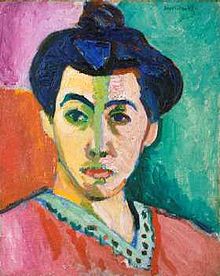Some history
of the carnival in Venice:
In Venice the carnival starts at the beginning of the
lent and ends to the last day of lent, the day before Ash Wednesday. The reason that they started the carnival was
their victory of the Republic Della surenmissima in 1162. They honoured this
victory by meeting up in the San Marco square to dance. In the 1339 a law came
out that they couldn't wear masks when visiting nuns and couldn't wear vulgar
clothes and they couldn't paint their faces or wear wigs. At the end of the republic
the masks were forbidden. In 1797 the government of Austria banned the
festivals and the masks they would wear.
It was Revived in 1979 by the Italian government and
was told to go back to their carnival traditions. The Venetian college students
redeveloped the masks and by this they began to be more and more famous.
The masks could be worn at any time of the year and
there are different masks for different people and that could show their
emotions. When the masks started they
used to be made with porcelain or with glass techniques, but nowadays they are
made by applying the gesso and gold leaf, the gesso is gypsum. When they
first started the carnival, there is little evidence that they used to wear
masks.
Types of masks:
Bauta: the colour is a simple stark white. The mask
covers the entire face, it has an over prominent nose , a projecting chin- line
, no mouth, the beak is like a chin enable to talk, with the mask they usually
wear a red or black cape and a tricorn which a hat.
It has to be worn when making a political decision. It
is usually worn by men and they painted woman wearing it.
Columbia: it is a half mask; it covers the user’s eyes,
nose and upper cheeks, decorated with gold, silver, crystals and feathers. The name
of the mask is called for an actress which they designed the mask for her because
she didn't want her face covered completely.
In this time woman and men wear this.
Medica della
peste/ the plague doctor.
This mask didn't start as a carnival mask, it was used to prevent the user to get the disease
and not spread the disease if they had it. It has a long beak; it is white, round
eyeholes and covered with crystal.
Mute dark one
lady: it is a small
strapless black velvet mask cut eyeholes and no lips. It was invented in France
and got popular in Venice from the 1751 – 1760.
Volto which
means face
It has a stark
white colour, gilded and decorative tricon and a cloak and it covers the entire
face.
 Pantalone: he
who wears the pants or father figure.
Pantalone: he
who wears the pants or father figure.
It shows a sad old man with an over sized nose and it
is half a mask.
Arlecchino:
it is a character of comedy.
It is a wooden half mask painted black, a short blunt,
ape like nose and round big eyebrows.
zanni: theatrical
character.
It is a half mask in leather, bulging eyebrow, long
nose with a reverse curve towards the end of stupidity.
Mask makers:
10th April 1436
How they created them, they drew their faces into
their plaster and played with shape and they paid attention to detail.
Today the
masks are the most famous from the theme carnivals around Europe. They have a
lot of nice costumes as well but it is best known for the masks.
Bibliography:







.jpg)










